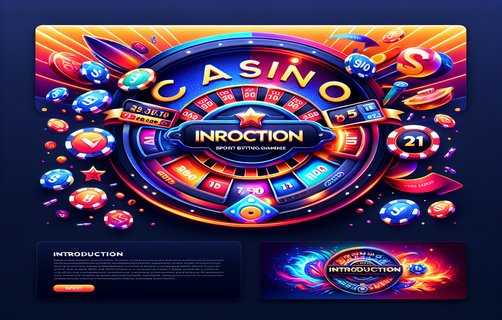The Dynamics of Rummy: Navigating Luck and Strategy
रम्मी की डाइनामिक्स: किस्मत और रणनीति में यात्रा
In the vibrant world of Rummy, a seemingly simple card game, deeper layers of strategy emerge as players engage in the art of deception and skillful play. While luck undeniably plays a role, players have established methods to mitigate its influence, allowing for a balance between chance and strategy. This analysis delves into various facets that define gameplay: luck mitigation, movable board sections, variable turn order, event cards, resource time tracking, and pilot strategies.
Luck mitigation in Rummy comes into play through strategic discards and picks, where players assess risk versus reward. The choice to draw from the discard pile or the deck can significantly impact game dynamics. A player who can anticipate opponents' needs while cleverly concealing their intentions gains a competitive edge. The ability to read your opponent and adapt to their strategies is crucial. This interaction transforms the game from mere chance to a psychological battlefield where each decision has implications.
The concept of movable board sections adds another layer of complexity to Rummy. Imagine a game where certain cards could shift positions based on player actions or predetermined moves at specific intervals. This feature could lead to a dynamic board state where players must constantly reassess their strategies. The potential for unexpected alliances or rivalries based on these shifts brings in innovative gameplay where predictability is the enemy.
Variable turn order provides a unique twist to traditional Rummy rules. Instead of a fixed clockwise rotation, players could draw cards or play in a sequence based on their card strengths, round successes, or even through a randomized system. This change enhances the unpredictability of the game, compelling players to remain alert and flexible in their strategies. It could also heighten the importance of timing—when to play aggressively and when to lay low.
Event cards can transform a standard Rummy session into an unpredictable adventure. These cards, when drawn, could introduce unexpected challenges or advantages, from gaining extra draws to forcing opponents to discard crucial cards. This element introduces an exhilarating unpredictability that can shift the tide of the game in moments. Players must strategize not only around their current cards but also anticipate potential events that could occur, fostering deeper engagement in each round.
Resource time tracking may refer to the opportunity costs associated with playing certain card combinations or strategies. The value of time spent waiting for a card versus proactive plays can significantly impact the game’s pace and outcome. Players should weigh the benefits of pursuing a longer strategy against the urgency of immediate wins, thus introducing a time management aspect that is often overlooked in traditional Rummy.
Lastly, pilot strategies—pragmatic, test-run tactics—allow players to experiment with innovative approaches without the fear of complete failure. By assessing potential strategies in lower-stakes environments or during friendly matches, players can refine their skills and adapt quickly when faced with the high stakes of competitive play. This cultivation of a trial-and-error mindset supports an innovative atmosphere where players continuously evolve.

In conclusion, Rummy is not merely a game of luck; it is a complex interplay of strategy and psychology. Players who understand and leverage the introduced mechanisms will not only mitigate luck’s role but elevate their game, turning it into an immersive experience laden with strategic depths and creative possibilities.
रम्मी की जीवंत दुनिया में, एक ऐसा सरल कार्ड खेल प्रतीत होता है, जिसमें अधिक गहराई की रणनीतियों की परतें उभरती हैं जैसे खिलाड़ी धोखे और कुशल खेल की कला में संलग्न होते हैं। जबकि किस्मत निस्संदेह रूप से एक भूमिका निभाती है, खिलाड़ियों ने इसके प्रभाव को कम करने के लिए उपाय स्थापित किए हैं, जिससे किस्मत और रणनीति के बीच संतुलन बनता है। यह विश्लेषण विभिन्न पहलुओं की खोज करता है जो खेल के प्रारूप को परिभाषित करते हैं: किस्मत को कम करना, चलने वाले बोर्ड हिस्से, परिवर्तनशील टर्न क्रम, इवेंट कार्ड, संसाधन समय ट्रैकिंग, और पायलट रणनीतियाँ।
रम्मी में किस्मत की कमी तब आती है जब रणनीतिक छुटकारे और उठाने के माध्यम से, जहाँ खिलाड़ी जोखिम और पुरस्कार का मूल्यांकन करते हैं। ऐसा चुनाव जो त्याग के ढेर से खींचता है या गद्दी से खींचता है, खेल की गतिशीलता पर महत्वपूर्ण प्रभाव डाल सकता है। एक खिलाड़ी जो प्रतिद्वंद्वियों की आवश्यकताओं का अनुमान लगा सकता है जबकि अपने इरादों को चतुराई से छिपाता है, प्रतिस्पर्धी लाभ प्राप्त करता है। अपने प्रतिद्वंद्वी को पढ़ने और उनकी रणनीतियों के प्रति अनुकूलित करने की क्षमता बहुत महत्वपूर्ण है। यह इंटरैक्शन खेल को न केवल किस्मत से बल्कि एक मनोवैज्ञानिक युद्ध भूमि में बदल देता है जहाँ प्रत्येक निर्णय के परिणाम होते हैं।

चलने वाले बोर्ड के खंडों की संकल्पना रम्मी में अन्य जटिलता का स्तर जोड़ती है। कल्पना कीजिए एक खेल जहाँ कुछ कार्डों की स्थिति खिलाड़ियों के कार्यों या विशिष्ट अंतराल पर पहले से निर्धारित चालों के आधार पर बदल सकती है। यह सुविधा एक गतिशील बोर्ड राज्य की संभावना पैदा कर सकती है जहाँ खिलाड़ी निरंतर अपनी रणनीतियों का पुनर्मूल्यांकन करना होगा। इन परिवर्तनों के आधार पर अप्रत्याशित गठबंधनों या प्रतिकृतियों की संभावना नवोन्मेष खेल के लिए लाती है जहाँ भविष्यवाणी दुश्मन बन जाती है।
परिवर्तनीय टर्न क्रम पारंपरिक रम्मी नियमों में एक अनूठा मोड़ प्रदान करता है। एक निश्चित घड़ी घूर्णन के बजाय, खिलाड़ी अपने कार्ड की ताकत, राउंड की सफलता, या यहां तक कि एक यादृच्छिक प्रणाली के आधार पर कार्ड खींच सकते हैं या खेल सकते हैं। यह बदलाव खेल की अप्रत्याशितता को बढ़ाता है, खिलाड़ियों को अपने रणनीतिकों में सतर्क और लचीला रहने के लिए मजबूर करता है। यह समयबद्धता के महत्व को भी बढ़ा सकता है - कब आक्रामक खेलना है और कब ढाई रहना है।
इवेंट कार्ड एक मानक रम्मी सत्र को अप्रत्याशित साहसिकता में बदल सकते हैं। ये कार्ड, जब खींचे जाते हैं, तो अप्रत्याशित चुनौतियाँ या लाभ पेश कर सकते हैं, अतिरिक्त खींचने से लेकर प्रतिद्वंद्वियों को महत्वपूर्ण कार्ड त्यागने के लिए मजबूर करने तक। यह तत्व एक रोमांचक अप्रत्याशितता पेश करता है जो कुछ पल में खेल की धारा को बदल सकता है। खिलाड़ियों को न केवल अपने वर्तमान कार्डों के चारों ओर रणनीति बनानी चाहिए बल्कि संभावित घटनाओं का अनुमान लगाना चाहिए जो हो सकते हैं, इस प्रकार हर राउंड में गहन संलिप्तता को बढ़ावा देती है।
संसाधन समय ट्रैकिंग उस अवसर लागत को संदर्भित कर सकती है जो विशिष्ट कार्ड संयोजन या रणनीतियों को खेलने में संबंधित होती है। एक कार्ड का इंतजार करने में खर्च किया गया समय बनाम सक्रिय खेलों के लाभों का मूल्यांकन खेल की गति और परिणाम पर महत्वपूर्ण प्रभाव डाल सकता है। खिलाड़ियों को लंबी रणनीतियों को अपनाने के लाभों और तात्कालिक जीत की तात्कालिकता के बीच वजन करना चाहिए, इस प्रकार एक समय प्रबंधन पहलू पेश करना जो पारंपरिक रम्मी में अक्सर अनदेखा रहता है।
अंत में, पायलट रणनीतियाँ - प्रायोगिक, परीक्षण-चलाने वाली तकनीकें - खिलाड़ियों को नवीन दृष्टिकोणों के साथ प्रयोग करने की अनुमति देती हैं बिना पूर्ण असफलता के डर के। कम-स्टेक वातावरण या दोस्ताना मैचों के दौरान संभावित रणनीतियों का आकलन करके, खिलाड़ी अपनी क्षमताओं को सुधार सकते हैं और प्रतिस्पर्धात्मक खेल के उच्च दांवों का सामना करते समय तेजी से अनुकूलित कर सकते हैं। परीक्षण-और-त्रुटि मानसिकता का यह पालन निरंतर विकास का समर्थन करता है।
अंततः, रम्मी केवल किस्मत का खेल नहीं है; यह रणनीति और मनोविज्ञान का एक जटिल आपसी खेल है। जो खिलाड़ी पेश किए गए तंत्रों को समझते और लाभ लेते हैं, वे न केवल किस्मत की भूमिका को कम करेंगे बल्कि अपने खेल को ऊंचा करेंगे, इसे रणनीतिक गहराइयों और रचनात्मक संभावनाओं से भरे अनुभव में बदल देंगे।

comments
CardShark92
This article really captured the strategic depth of Rummy! I loved the section on movable board sections.
DeckMaster
Luck mitigation is key in Rummy; knowing when to hold cards makes all the difference!
RummyMania
The idea of event cards could totally change gameplay! Excited to try it out.
Strategist101
Variable turn order sounds intriguing! It adds a nice twist to the traditional gameplay.
TimeSavant
Resource time tracking in gameplay? I never thought about it before, but it's so relevant!
PilotTester
I love the concept of pilot strategies! It encourages innovation without the pressure.